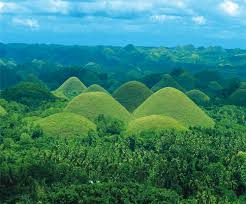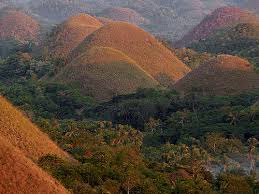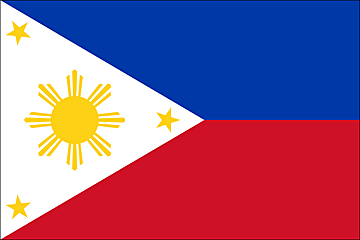During the 16th century, Philippines had come under the colony of Spain. This actually brought about the construction of Intramuros in 1571 which consisted of European style’s infrastructures (buildings and churches) and it is replicated in different parts of the archipelago. However they are surrendered by Spain to United State due to the Spanish –American War in 1898, and it had become the first and only colony in United States. (History)
· Location
The Philippines is part of Southeast Asia, an archipelago between the Philippine Sea and South China Sea. The Philippines archipelago is made up of 7107 islands. (East & Southeast Asia : Philippines, 2010)
· People

According to Central Intelligence Agency, the total population in Philippines is 99900177 people. This statistic is estimated in July 2010. It is ranked number 12 for its population when compared to the rest of the world. (East & Southeast Asia : Philippines, 2010)
The Philippines people are the Filipinos and their ethnic groups consist of Tagalog , Cebuano, Ilocano, Bisaya (or Binisaya), Hiligaynon Ilonggo, Bikol, Waray and others. Philippines also consist of different religion and most of Filipinos are Roman Catholic.
· Mode of Education
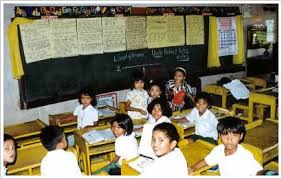
Education in Philippines is managed by the government organizations which are the Department of Education, Culture and Sports (DECS), the Commission on Higher Education (CHED) and Technical Education and Skills Development Authority (TESDA).
The academic years are actually scheduled seasonally. This means the academic years will start after coldest and hottest seasons. In Philippines, the months between March to May are usually the hottest seasons of the year and thus making them as the “summer break” for the students. They will be back to school in June (which is the start of the wet season). As the Philippines is a Catholic country, they have a 2 to 3 weeks break in December (Christmas) and a few days in November (Day of the Saints and Day of the Dead).
Education System in Philippines had improved during the last four decades of the twentieth century. There is public school which is like the normal nursery to kindergarten in Singapore. Later, they will enter elementary school (which is like the primary schools in Singapore). Then they will be entering secondary schools and then tertiary institutions after taking the College Entrance Examination (CEE). There are also different other schools like International Schools and Laboratory High Schools.
Primary and Secondary schools’ school week starts on every Monday to Friday at 0730AM. Like Singapore, the schools start flag rising, singing national Anthem and pledge. They will have their recess in their cafeteria or packed lunch by their parents.
Majority in the public sector in Philippines are higher educated which it actually consist of up to 80% of the student population. In the aspect of gender, the distribution in elementary schools of male and female students is equally represented while in the secondary and college area, there are more female students. (Philippines - Educational System - An Overview)
· Languages
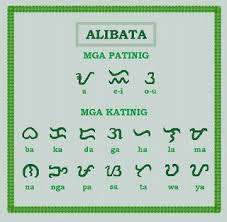
The Philippines have over a hundred of languages in the country which inclusive of the dialects and some other languages. Filipino is declared as the official language along with English in 1987. The reason of why English is used as the official language is that it is very important during the British invasion and also when they are under the US rule. It is used in the government and education institutions. Filipino is used all over Philippines and that is the preferred language by the civil servants and the arm forces.
Spanish is also one of the languages spoke in Philippines due to the history of Philippines. It was heavily used in 1956 in education, religion, trade and politics. In 1986, free education in Spanish was promoted to promote the further use of Spanish. However, it was no long considered as official language in 1973 and that its uses is now restricted to only a few parts of Philippines and Spanish Family.
Mandarin is also spoken in Philippines. It was brought in by the immigrants from China and one of the dialects – Lan-nang-oe dialect is spoken by the country’s Chinese residents and other groups. Some Filipinos can also speak Cantonese (another dialect from China).
There are other Major languages in Philippines that is spoken in their respective religions (official language of their religion). The followings that I will be elaborating about is the 6 major dialects that is spoken around Philippines
The first is Tagalog. It actually means Native River and it is an Austronesian language that forms the basis of national and official language Filipino. Secondly is Iilokano. It is the third most spoken secondary language and used by millions natives. Thirdly is the Cebuano which is the most spoken language in Central Philippines. Its name came from the island of Cebu.
Fourth will be Tausug that derived from the word irayathat is mostly spoken in Sulu, Philippines, Malaysia and Indonesia by the Tausug People. The Fifth language will be Kapampangan which means the river bank and also one of the major languages of the Philippines. The last one will be Knaray0a which rerived from the word iraya, referring to a group of people staying in the mountain areas. It is spoken mainly in Antique province in the Philippines. (Rajeev)
· Leisure Programs
I will be talking about a few festivals in Philippines. May is called as the “month of colourful festivals” (Amperspoint) has a few major festivals happening. On May 15th, there is a Pahiyas Festival which means the celebration of thanksgiving. It is actually the most extravagant festival that is celebrated in Philippines. This is a way for the locals to give their thanks for the fruitful harvest of the year. This event has been going on since the 16th century. During the festival, people will display their harvest outside their homes for the priest to bless. Competition is held for families to compete for the title of the best decorated house and this is also the main highlight of the event. (Pahiyas Festivals: A Celebration of Thanksgiving )
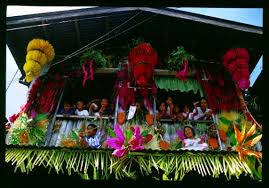
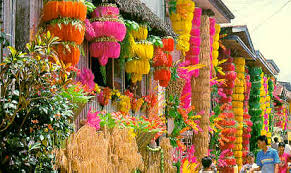
In January, there is an Ati-Atihan festival that held in Panay. It is considered as the wildest among the Philippines fiestas. People will start to paint their faces with black soot and wear bright and outlandish costume as they dance. (Domingo, 1996) Ati-Atihan means “make believe atis” and it is name after the Ati who is the indigenous native of the natives of the island before the Malays (in 10th Century) and Spanish (in 16th Century). This festival is to celebrate the arrival of gift of Santo Nino by Magellan to the native queen of Cebu in 1521. (Ati-Atihan Festival)
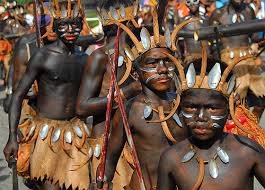

Water sports are very normally seen in Philippines. There are actually diving, surfing, kayaking, rafting. According to Ted Lerner, one of the best things about surfing in Philippines is that the less crowded waves offered everyone a chance to enjoy the sports without the problems of crowds. It has endless miles of reefs and many will be tempted to assume that Philippines are the world class destination for surfing. (Lerner, 1995)
· Philippines’ is known of...
Philippines is famous for their forests and natural beauty. Philippines is one of the most biologically diverse nations in the world. It is listed as one of the top five by the conservation community. (Forests: Philippines)
Next will be the attractions and beautiful areas in Philippines. One of them is the Chocolate hills. They are located at Bohol in Philippines and there are actually more than 1268 cone-shaped hills there! They are unique not only because they are covered in grass and also that the cone shape is more or less common t all although there are difference in size. The hills will looks chocolaty only during the dry season as the grass wither and turn into brown color. That will looks like giant Hershey chocolate kisses! (Chocolate Hills of Bohol)
